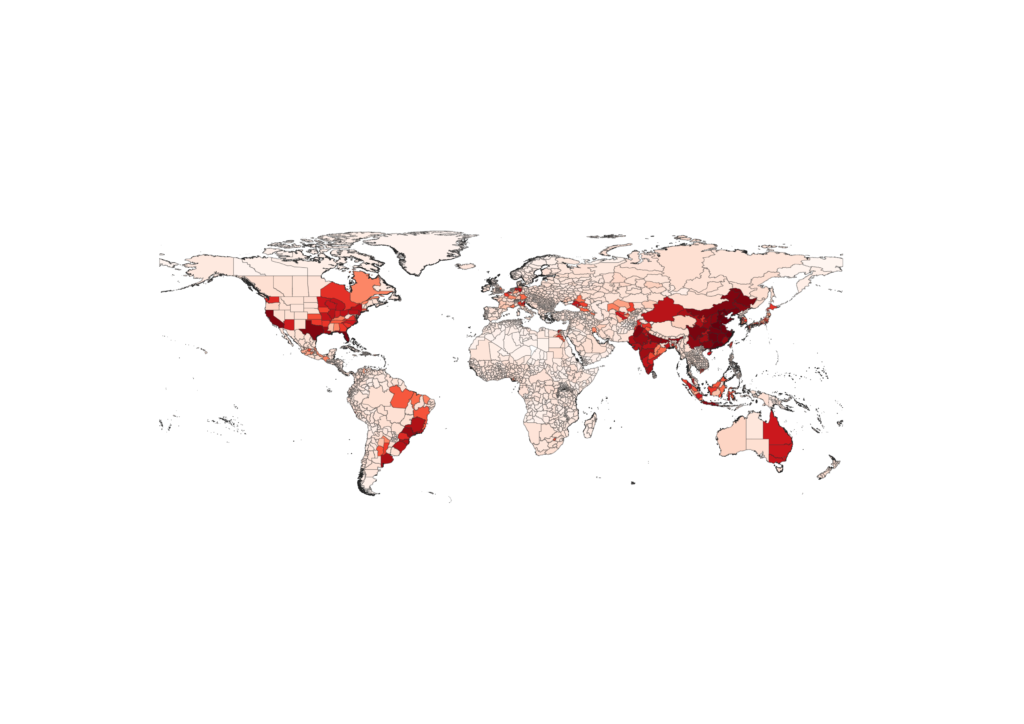Asia dominates the list of provinces at risk with more than half (114) of the top 200 in 2050 in this region, with special focus on China and India, says the report
Nine states in India are among the world’s top 50 regions at risk of damage from eight climate change hazards.
The XDI Gross Domestic Climate Risk dataset compared states worldwide according to modelled projections of damage to buildings and properties from eight climate change hazards—riverine and surface flooding, coastal inundation (coastal flooding), extreme heat, forest fire, soil movement (drought-related), extreme wind and freeze thaw. The study found that Asia dominates the list of provinces at risk with more than half (114) of the top 200 in 2050 in this region.
According to the analysis, 80% of the top 50 most at-risk states and provinces in 2050 are in China, US and India. After China, India has the highest number of states (9) in the top 50, which include Bihar, Uttar Pradesh, Assam, Rajasthan, Tamil Nadu, Maharashtra, Gujarat, Punjab and Kerala. Highly developed and globally significant Asian economic hubs in the top 100 for damage risk include Beijing, Jakarta, Hồ Chí Minh City, Taiwan and Mumbai.
Average Damage Ratio provides insight into states and provinces that may have fewer properties but which may be subjected to greater or more widespread damage, so the proportion of damage is higher.
High risk in Asia
“In terms of overall scale of damage risk, and in terms of risk escalation, Asia has the most to lose as climate change extreme weather increases, and the most to gain from preventing worsening climate change and accelerating climate resilient investment,” said XDI CEO Rohan Hamden.

The top two most at-risk provinces in the world in 2050 are two of the largest economies in China—Jiangsu and Shandong—said the report. Each has a relatively diverse economy worth over a trillion US dollars. China has 29 states in the top 100 in 2050 and 26 of these are in the top 50.
Globally, the Chinese provinces Jiangsu, Shandong, Hebei, Guangdong and Henan have the highest results for damage risk of any of the provinces and territories in this analysis. This is because these provinces are large, host extensive industrial, trade, residential and commercial development and are exposed to coastal sea level rise and riverine and surface flooding. The analysis also found that South East Asia experiences the greatest escalation in damage from 1990 to 2050 anywhere in the world.
Other countries with multiple provinces and states in the top 50 include Brazil, Pakistan and Indonesia. In Europe, high- ranking states encompass the cities of London, Milan, Munich and Venice.
The findings of the analysis underscore the importance of pricing physical climate risk in financial markets given the amount of capital investment represented by the assets at risk in the provinces identified, the vulnerability of global supply chains, and the need for climate resilience to inform investment.
About The Author
You may also like
Win for small island states as top maritime court calls GHG emissions a form of marine pollution
Climate warming is altering food webs and carbon flow in high-latitude areas: Study
Rise in temperature leading to increased suicide rates in US, Mexico: Study
Seafood to lose nutritional value due to climate change: Study
14.5 million lives may be lost by 2050 due to climate change: WEF report


